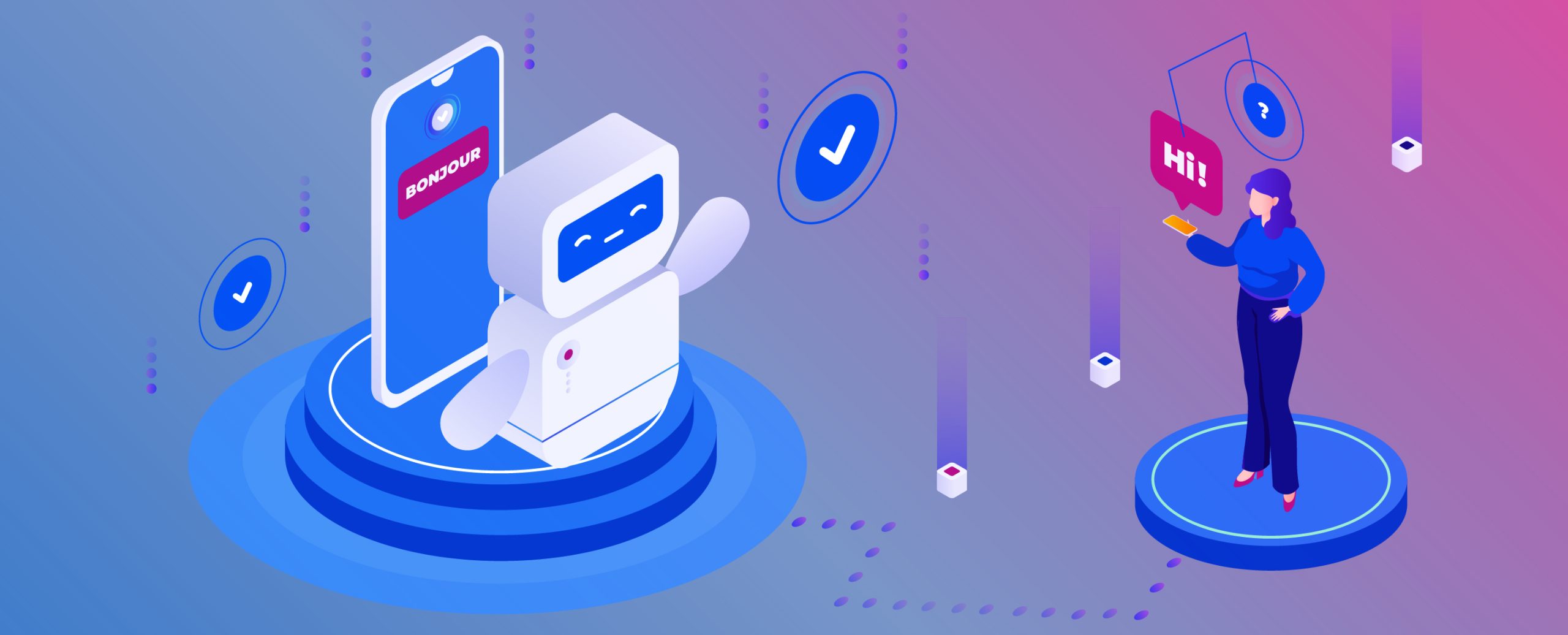How Large Language Models Can Improve a Global Customer Experience

How might global companies provide a better customer experience online in every market they serve? Answering this question is getting more difficult as customers interact with businesses across a complex web of touchpoints ranging from TikTok to Google Search. According to Nimdzi Insights, 60 percent of those customers expect a personalized experience, and 90 percent will ignore a product if it is not presented in their native language. Large language models (LLMs) are part of the solution – but only if LLMs are managed with humans in the loop. This post takes a closer look.
How Large Language Models Can Help Global Businesses
An LLM (such as OpenAI’s ChatGPT or Google’s LaMDA) is a type of AI that uses deep learning techniques and large data sets to understand, summarize, and create content. These models are trained on massive amounts of text data, typically in the order of billions of words. And their impact has already been profound. Businesses are using LLMs for applications ranging from responding to customer queries to creating computer code.
Companies can also create a better experience by combining machine translation systems based on rules and algorithms with LLMs’ deep learning techniques to fine-tune content for different domains and contexts. Doing so can help businesses with:
- Instant customer support in every language: an LLM-powered chatbot can summarize content from existing knowledgebases and provide instant relevant responses to customer inquiries in multiple languages, and help getting to a resolution faster.
- Personalization: language models can support the analysis of large data sets of user preferences and behaviours. This enables businesses to offer personalized recommendations, content, and promotions, leading to increased customer satisfaction and engagement.
- Monitoring customer sentiment: businesses can use LLMs powered solutions to scan the content of social media posts, chat conversations, and virtually every other form of customer feedback to detect potential problems before they escalate and get feedback on what they are doing well.
Consider a consumer products business launching a new product around the world. The language and user experience must be customized for different versions of the company’s website, social media platforms, Google Business Profiles, and every other place a customer might encounter that brand from countries ranging from Brazil to France, depending on where the company operates. This is where AI and LLMs can support to provide the content in the relevant language.
Additionally, LLMs can help companies create more relevant and engaging content that resonates with their target audience -- supporting translators with transcreation suggestions, leading to increased customer satisfaction and loyalty.
But there’s a catch. LLMs cannot operate effectively on their own. They need human oversight to make sure they do their jobs responsibly. LLMs are still emerging. Their shortcomings include:
- Inaccuracies: LLMs are trained usually with data found online. Which might not always be the correct definitive answers.
- Bias: The datasets that LLMs use as the base might contain biased information, for example, information scraped from Newspapers might contain political bias, or widely available information might implicitly contain gender, ethnicity bias, etc.
- Lack of empathy. They might lack the personal touch and empathy that customers may expect from human customer service representatives for example.
Our recent post from Sergio Bruccoleri discusses their shortcomings in more detail. It’s important to remember that LLMs are going to get better based on human feedback. When people publish critical analyses of bias and inaccuracies, they’re giving companies such as Google and OpenAI important feedback that they can use to improve their models.
Humans in the Loop
So, what should businesses do in the meantime? The answer: keep people in the loop to give LLMs continuous feedback. With constant feedback from people, LLMs get better. This process has a name: reinforcement learning from human feedback (RLHF). This is a variant of reinforcement learning where humans are involved in the validation process.
In this approach, an AI model interacts with the environment, receives rewards, and updates its behavior based on the feedback provided by a human expert. The expert can be a human teacher or a group of people who provide feedback on the agent’s actions.
Human feedback can take many forms, such as numerical ratings on a product site, in-depth reviews, and social media content such as tweets. The reinforcement learning algorithm uses this feedback to adjust its policy to improve its performance in the environment.
Some examples of applications of reinforcement learning from human feedback include personalized recommendation systems, personalized medical treatment, and game-playing agents that learn from human players. This approach works with LLMs as well, for example by assist in automating certain customer service tasks, such as chatbots, voice assistants, and personalized messaging, which can improve the overall customer experience
How Centific Can Help
Centific applies reinforcement learning from human feedback to improve our clients’ customer experiences in every market they operate. As we recently discussed using generative AI in localization, we do reinforcement learning through our global pool of talent in more than 200 markets. Contact us to learn more.
